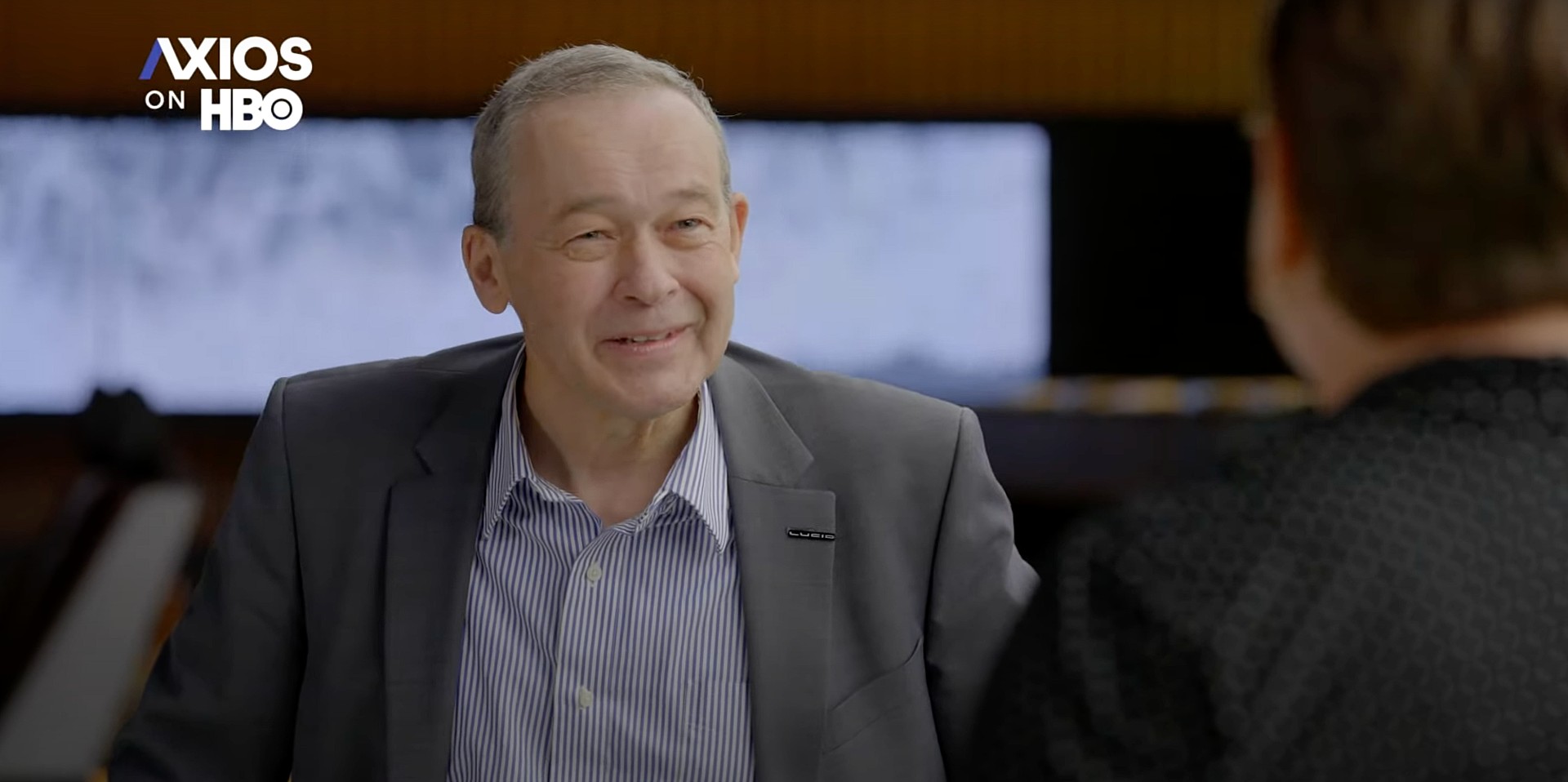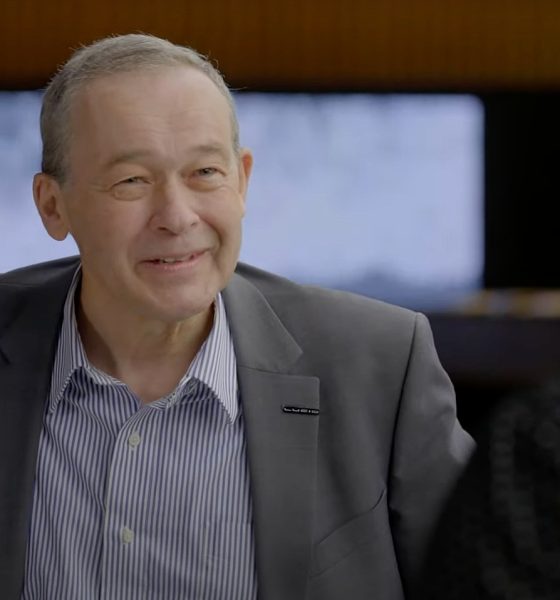

News
Lucid CEO Rawlinson says he was Model S Chief Engineer, a claim Elon Musk refutes
Lucid Group CEO and CTO Peter Rawlinson refuted Elon Musk’s claims that he was not Chief Engineer of Tesla’s flagship electric car, the Model S, in a recent interview with HBO Axios. Rawlinson and Musk, former co-workers at Tesla, evidently have not gotten along since the now-CEO of Lucid Group left the company.
Rawlinson has led Lucid Group to the production and initial deliveries of its first electric car, the Lucid Air Dream Edition, which occurred on October 31st. However, in Rawlinson’s tenure of Lucid, he has garnered the respect of many EV enthusiasts, but Musk does not appear to be one of them. Rawlinson has stated on several occasions during interviews as Lucid CEO that much of his EV expertise comes from his experience as Chief Engineer of the Model S program at Tesla in the early 2010s. However, Musk has disputed this claim on several occasions, the most recent being in May 2021.
“Rawlinson was never chief engineer. He arrived after Model S prototype was made, left before things got tough & was only ever responsible for body engineering, not powertrain, battery, software, production, or design,” Musk Tweeted.
Rawlinson said during his Axios interview that his business cards from Tesla listed his job description as “Model S Chief Engineer.” His LinkedIn page also states that his job post at Tesla was “Vice President and Chief Engineer for Model S.” Additionally, he stated that the SEC filings from Tesla during his employment at the company also listed him as Chief Engineer of the Model S. In fact, in an 8-K document filed with the SEC on December 16, 2010, Tesla does list Rawlinson as “Vice President and Chief Engineer.” While it does not indicate Rawlinson was VP and Chief Engineer of the Model S specifically, that would have been the only vehicle Tesla had in development at the time. According to the same presentation, Tesla was planning to complete alpha builds, external body design and engineering, safety and structural design, supplier sourcing, and site preparation for the Model S in 2010.
Credit: SEC | Tesla
In response to Musk’s claims, Rawlinson stated, “I think it’s sort of historical revisionism, isn’t it?”
The story does not stop there. Musk has also stated in the past that “Rawlinson didn’t design Model S. Prototype was done before he joined & he left us in the lurch just as things got tough, which was not cool. He did make some contributions to body/chassis engineering, but not to powertrain, battery, electronics or software.” However, Rawlinson also commented on his reasons for leaving Tesla in 2012, which included his elderly mother needing his assistance “and I had a boss that wasn’t treating me too well.”
A portion of Rawlinson’s interview is available below.

News
Tesla FSD fleet is nearing 7 billion total miles, including 2.5 billion city miles
As can be seen on Tesla’s official FSD webpage, vehicles equipped with the system have now navigated over 6.99 billion miles.

Tesla’s Full Self-Driving (Supervised) fleet is closing in on almost 7 billion total miles driven, as per data posted by the company on its official FSD webpage.
These figures hint at the massive scale of data fueling Tesla’s rapid FSD improvements, which have been quite notable as of late.
FSD mileage milestones
As can be seen on Tesla’s official FSD webpage, vehicles equipped with the system have now navigated over 6.99 billion miles. Tesla owner and avid FSD tester Whole Mars Catalog also shared a screenshot indicating that from the nearly 7 billion miles traveled by the FSD fleet, more than 2.5 billion miles were driven inside cities.
City miles are particularly valuable for complex urban scenarios like unprotected turns, pedestrian interactions, and traffic lights. This is also the difference-maker for FSD, as only complex solutions, such as Waymo’s self-driving taxis, operate similarly on inner-city streets. And even then, incidents such as the San Francisco blackouts have proven challenging for sensor-rich vehicles like Waymos.
Tesla’s data edge
Tesla has a number of advantages in the autonomous vehicle sector, one of which is the size of its fleet and the number of vehicles training FSD on real-world roads. Tesla’s nearly 7 billion FSD miles then allow the company to roll out updates that make its vehicles behave like they are being driven by experienced drivers, even if they are operating on their own.
So notable are Tesla’s improvements to FSD that NVIDIA Director of Robotics Jim Fan, after experiencing FSD v14, noted that the system is the first AI that passes what he described as a “Physical Turing Test.”
“Despite knowing exactly how robot learning works, I still find it magical watching the steering wheel turn by itself. First it feels surreal, next it becomes routine. Then, like the smartphone, taking it away actively hurts. This is how humanity gets rewired and glued to god-like technologies,” Fan wrote in a post on X.
News
Tesla starts showing how FSD will change lives in Europe
Local officials tested the system on narrow country roads and were impressed by FSD’s smooth, human-like driving, with some calling the service a game-changer for everyday life in areas that are far from urban centers.

Tesla has launched Europe’s first public shuttle service using Full Self-Driving (Supervised) in the rural Eifelkreis Bitburg-Prüm region of Germany, demonstrating how the technology can restore independence and mobility for people who struggle with limited transport options.
Local officials tested the system on narrow country roads and were impressed by FSD’s smooth, human-like driving, with some calling the service a game-changer for everyday life in areas that are far from urban centers.
Officials see real impact on rural residents
Arzfeld Mayor Johannes Kuhl and District Administrator Andreas Kruppert personally tested the Tesla shuttle service. This allowed them to see just how well FSD navigated winding lanes and rural roads confidently. Kruppert said, “Autonomous driving sounds like science fiction to many, but we simply see here that it works totally well in rural regions too.” Kuhl, for his part, also noted that FSD “feels like a very experienced driver.”
The pilot complements the area’s “Citizen Bus” program, which provides on-demand rides for elderly residents who can no longer drive themselves. Tesla Europe shared a video of a demonstration of the service, highlighting how FSD gives people their freedom back, even in places where public transport is not as prevalent.
What the Ministry for Economic Affairs and Transport says
Rhineland-Palatinate’s Minister Daniela Schmitt supported the project, praising the collaboration that made this “first of its kind in Europe” possible. As per the ministry, the rural rollout for the service shows FSD’s potential beyond major cities, and it delivers tangible benefits like grocery runs, doctor visits, and social connections for isolated residents.
“Reliable and flexible mobility is especially vital in rural areas. With the launch of a shuttle service using self-driving vehicles (FSD supervised) by Tesla in the Eifelkreis Bitburg-Prüm, an innovative pilot project is now getting underway that complements local community bus services. It is the first project of its kind in Europe.
“The result is a real gain for rural mobility: greater accessibility, more flexibility and tangible benefits for everyday life. A strong signal for innovation, cooperation and future-oriented mobility beyond urban centers,” the ministry wrote in a LinkedIn post.
News
Tesla China quietly posts Robotaxi-related job listing
Tesla China is currently seeking a Low Voltage Electrical Engineer to work on circuit board design for the company’s autonomous vehicles.

Tesla has posted a new job listing in Shanghai explicitly tied to its Robotaxi program, fueling speculation that the company is preparing to launch its dedicated autonomous ride-hailing service in China.
As noted in the listing, Tesla China is currently seeking a Low Voltage Electrical Engineer to work on circuit board design for the company’s autonomous vehicles.
Robotaxi-specific role
The listing, which was shared on social media platform X by industry watcher @tslaming, suggested that Tesla China is looking to fill the role urgently. The job listing itself specifically mentions that the person hired for the role will be working on the Low Voltage Hardware team, which would design the circuit boards that would serve as the nervous system of the Robotaxi.
Key tasks for the role, as indicated in the job listing, include collaboration with PCB layout, firmware, mechanical, program management, and validation teams, among other responsibilities. The role is based in Shanghai.
China Robotaxi launch
China represents a massive potential market for robotaxis, with its dense urban centers and supportive policies in select cities. Tesla has limited permission to roll out FSD in the country, though despite this, its vehicles have been hailed as among the best in the market when it comes to autonomous features. So far, at least, it appears that China supports Tesla’s FSD and Robotaxi rollout.
This was hinted at in November, when Tesla brought the Cybercab to the 8th China International Import Expo (CIIE) in Shanghai, marking the first time that the autonomous two-seater was brought to the Asia-Pacific region. The vehicle, despite not having a release date in China, received a significant amount of interest among the event’s attendees.








